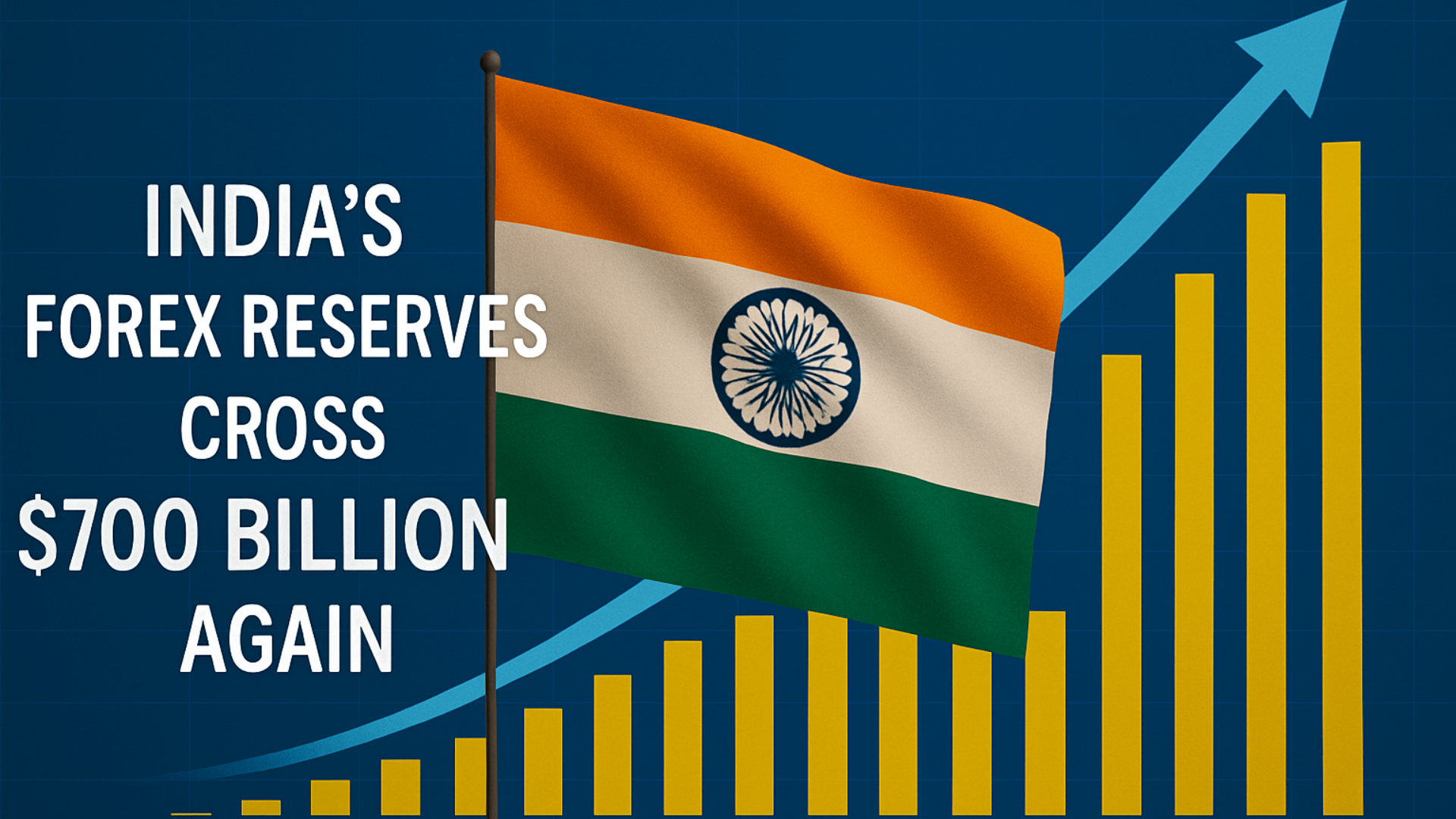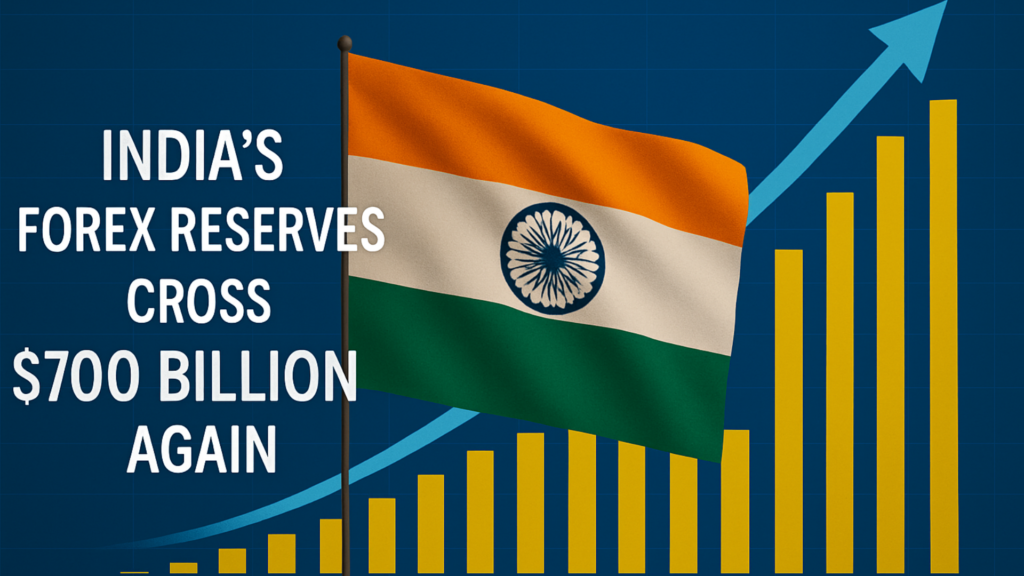

India’s Forex Reserves Cross $700 Billion Again: A Strong Rebound
India’s foreign exchange reserves have once again surged past the $700 billion mark, reaffirming the country’s strong external position and economic resilience. According to the latest data released by the Reserve Bank of India (RBI) on July 4, 2025, forex reserves rose by a robust $4.84 billion during the week ended June 27, reaching $702.78 billion. This puts the reserves within touching distance of the all-time high of $704.89 billion recorded in late September 2024.
Also Read; India’s GST collections hit a record ₹22.08 lakh crore
Major Contributors: Surge in Foreign Currency Assets
The increase in India’s forex reserves was primarily driven by a significant rise in foreign currency assets (FCA), which jumped by $5.75 billion to $594.82 billion. These assets — which include the dollar value of assets held in other major currencies like the euro, pound sterling, and yen — reflect not only capital inflows but also valuation gains due to currency movements.
In contrast, the country’s gold reserves witnessed a dip, falling by $1.23 billion to $84.5 billion. This decline was likely influenced by fluctuations in global gold prices and possible strategic rebalancing by the central bank.
Additional Components: SDRs and IMF Reserve Position
Apart from FCAs and gold, India’s forex reserves also comprise Special Drawing Rights (SDRs) with the International Monetary Fund (IMF) and the country’s reserve position in the IMF. SDRs saw an increase of $158 million to $18.83 billion during the same week, while the IMF reserve position rose by $176 million to $4.62 billion, signaling steady engagement with global financial institutions.
India’s Forex Reserves Rebound from January Lows
This resurgence marks a notable recovery from January 2025, when reserves had slumped to around $624 billion due to global financial market turbulence and heightened dollar demand. The steady rebuilding of reserves since then reflects improved macroeconomic stability, controlled inflation, resilient exports, and a revival in foreign capital inflows.
RBI’s Forward Dollar Book and Market Operations
Despite the headline increase in reserves, the RBI’s forward dollar book — which represents future foreign exchange obligations — declined by $19 billion over April and May, shrinking to $65.2 billion in May from a record $88.7 billion in February. This decline indicates a potential offset to current comfort levels in forex holdings, as these forward positions represent future outflows.
However, the RBI’s net dollar sales during this period were relatively modest at $3.2 billion, underscoring a cautious and strategic approach to currency management. The RBI continues to intervene in forex markets to smoothen volatility — purchasing dollars when the rupee strengthens and selling when it weakens — thereby maintaining currency stability without depleting reserves rapidly.
Rupee Stability and Global Trade Tensions
Since April 2025, the Indian rupee has experienced intermittent volatility amid rising global trade tensions, fluctuating commodity prices, and capital outflows from emerging markets. Yet, the RBI’s timely interventions and healthy reserve buffer have played a crucial role in anchoring the rupee, preventing excessive depreciation, and preserving investor confidence.
In his recent monetary policy address, RBI Governor Sanjay Malhotra emphasized that India’s forex reserves are sufficient to cover 11 months of imports and 96% of the nation’s total external debt — a testament to the country’s robust macroeconomic fundamentals and prudent reserve management.
The Strategic Importance of High India’s Forex Reserves
Maintaining a sizable forex reserve is critical for India’s financial stability. It not only provides a cushion during external shocks, such as oil price spikes or geopolitical crises, but also helps attract foreign investment by signaling a strong and stable economic environment. Moreover, with the global economic outlook remaining uncertain, a solid forex reserve position gives India the flexibility to manage capital flows, service external debt, and meet import demands seamlessly.
Also Read; शून्य निवेश; बिजनेस आइडिया और निष्पादन रणनीति रणनीति
Conclusion India’s Forex Reserves: A Sign of Strength and Stability
India’s latest forex reserve figures highlight the country’s improving external sector and effective monetary policy execution. As the reserves near record levels once again, they underscore the RBI’s adept handling of currency volatility and foreign capital dynamics. With a diversified reserve composition and proactive currency interventions, India remains well-positioned to weather global financial headwinds while fostering growth and stability at home.



